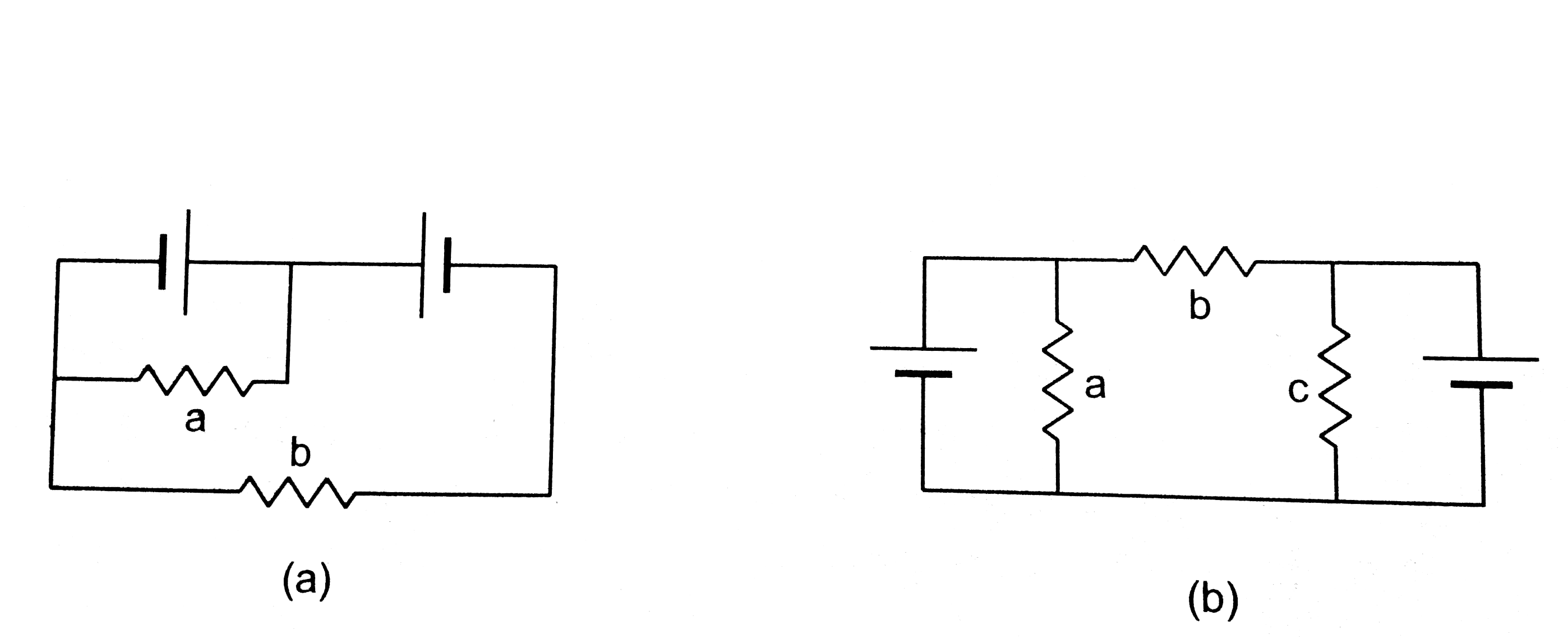A resistor of has a tolerance of 10% and another resistor of has a tolerance of . The tolerance of the series combination is rearly
The correct Answer is:C
To find the tolerance of the series combination of two resistors, we can follow these steps:
Step 1: Identify the given values
- Resistor 1 (R1) = 10 kΩ with a tolerance of 10%
- Resistor 2 (R2) = 20 kΩ with a tolerance of 20%
Step 2: Calculate the absolute tolerances
1. For Resistor 1 (R1):
- Tolerance percentage = 10%
- Absolute tolerance (ΔR1) = (Tolerance % / 100) × R1
- ΔR1 = (10 / 100) × 10 kΩ = 1 kΩ
2. For Resistor 2 (R2):
- Tolerance percentage = 20%
- Absolute tolerance (ΔR2) = (Tolerance % / 100) × R2
- ΔR2 = (20 / 100) × 20 kΩ = 4 kΩ
Step 3: Calculate the equivalent resistance in series
- The equivalent resistance (R_eq) when resistors are in series is given by:
Req=R1+R2=10kΩ+20kΩ=30kΩ
Step 4: Calculate the total absolute tolerance for the series combination
- The total absolute tolerance (ΔR_eq) for resistors in series is the sum of their absolute tolerances:
ΔReq=ΔR1+ΔR2=1kΩ+4kΩ=5kΩ
Step 5: Calculate the tolerance percentage of the equivalent resistance
- The tolerance percentage of the equivalent resistance is given by:
Tolerance %=(ΔReqReq)×100
- Substituting the values:
Tolerance %=(5kΩ30kΩ)×100=530×100=50030≈16.67%
Step 6: Round off the result
- Approximately, this value can be rounded to 17%.
Conclusion
The tolerance of the series combination of the two resistors is nearly 17%.
---
- Resistor 1 (R1) = 10 kΩ with a tolerance of 10%
- Resistor 2 (R2) = 20 kΩ with a tolerance of 20%
1. For Resistor 1 (R1):
- Tolerance percentage = 10%
- Absolute tolerance (ΔR1) = (Tolerance % / 100) × R1
- ΔR1 = (10 / 100) × 10 kΩ = 1 kΩ
- Tolerance percentage = 20%
- Absolute tolerance (ΔR2) = (Tolerance % / 100) × R2
- ΔR2 = (20 / 100) × 20 kΩ = 4 kΩ
- The equivalent resistance (R_eq) when resistors are in series is given by:
Req=R1+R2=10kΩ+20kΩ=30kΩ
- The total absolute tolerance (ΔR_eq) for resistors in series is the sum of their absolute tolerances:
ΔReq=ΔR1+ΔR2=1kΩ+4kΩ=5kΩ
- The tolerance percentage of the equivalent resistance is given by:
Tolerance %=(ΔReqReq)×100
- Substituting the values:
Tolerance %=(5kΩ30kΩ)×100=530×100=50030≈16.67%
- Approximately, this value can be rounded to 17%.
The tolerance of the series combination of the two resistors is nearly 17%.
Similar Questions
A resistor of 6kΩwith tolerance 10% and another resistance of 4kΩ with tolerance 10% are connected in series. The tolerance of the combination is about
View SolutionA resistor of 6 Ω is connected in series with another resistor of 4 Ω. A potential difference of 20 V is applied across the combination. Calculate :
the current in the circuit,
View SolutionA resistor of 6 Ω is connected in series with another resistor of 4 Ω. A potential difference of 20 V is applied across the combination. Calculate :
the potential difference across the 6 Ω resistor.
View SolutionTwo resistors of 10KΩ and 20KΩ are conne cted in series. If tolerance of each resistor is 10% then tolerance of the combination will be
View SolutionIf 400Ω of resistance is made by adding four 100Ω resistance of tolerance 5%, then the tolerance of the combinations
View SolutionWhat is the colour code of a carbon resistor having a resistance of 470Ω and a tolerance of 5% ?
View SolutionIn a carbon resistor the last band colour is missing. Its tolerance is
View SolutionA new car costs Rs 360000. Its price depreciates at the rate of 10% a year during the first two years and at the rate of 20% a year thereafter. What will be the price of the car after 3 years?
View SolutionEach of the resistors shown in figure has a resistances of 10(Ω)and each of the batteries has an emf of 10V.Find the currents through the resistors a and b in the two circuits.

View SolutionThe series combination of two batteries, both of the same emf 20 V, but different internal resistance of 10 Ω and 2 Ω , is connected to the parallel combination of two resistors 10 ohm and RΩ . The voltage difference across the battery of internal resistance 10Ω is zero, the value of R(∈Ω) is _________.
View Solution